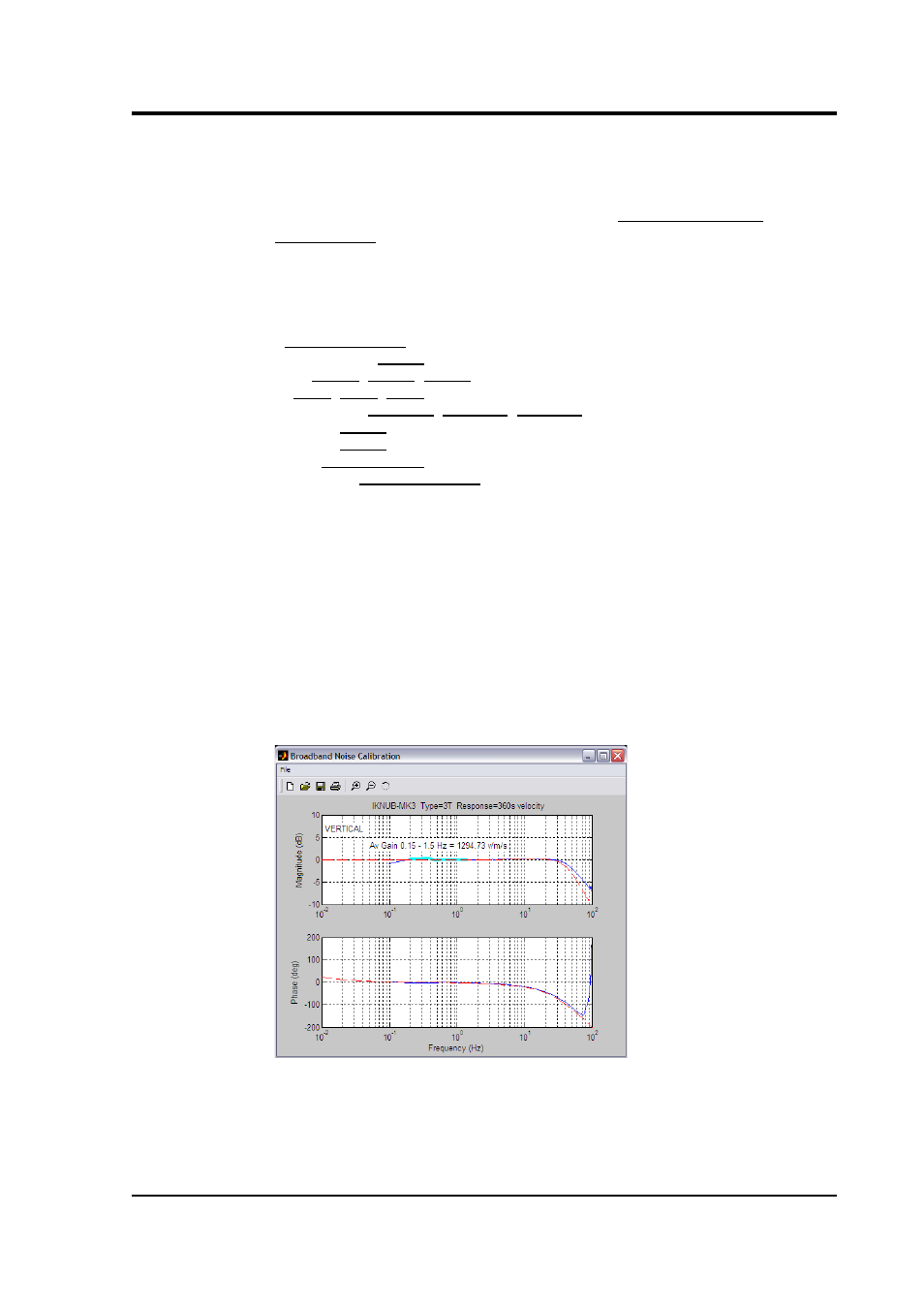Guralp Systems CMG-40T User Manual
Page 29

Operator's guide
executable (
scream.exe), Scream! will look there for suitable
calibration values. A sample
calvals.txt is supplied with Scream!,
which you can edit to your requirements. Each stream has its own
section in the file, headed by the line
[instrument-id]. The
instrument-id is the string which identifies the digitizer in the left-hand
pane, e.g.
GURALP-DEMO. It is always 6 characters (the system
identifier) followed by a dash, then 4 characters (the serial number.) For
example:
[instrument-id]
Serial-Nos=T3X99
VPC=3.153,3.147,3.159
G=1010,1007,1002
COILCONST=0.02575,0.01778,0.01774
CALVPC=3.161
CALRES=51000
TYPE=sensor-type
RESPONSE=response-code
9. Click
OK. The script will return with a graph showing the responsivity of
the sensor in terms of amplitude and phase plots for each component (if
appropriate.)
The accuracy of the results depends on the amount of data you have
selected, and its sample rate. To obtain good-quality results at low
frequency, it will save computation time to use data collected at a lower
sample rate; although the same information is present in higher-rate
streams, they also include a large amount of high-frequency data which
may not be relevant to your purposes.
The
bbnoisecal script automatically performs appropriate averaging
to reduce the effects of aliasing and cultural noise.
January 2006
29
